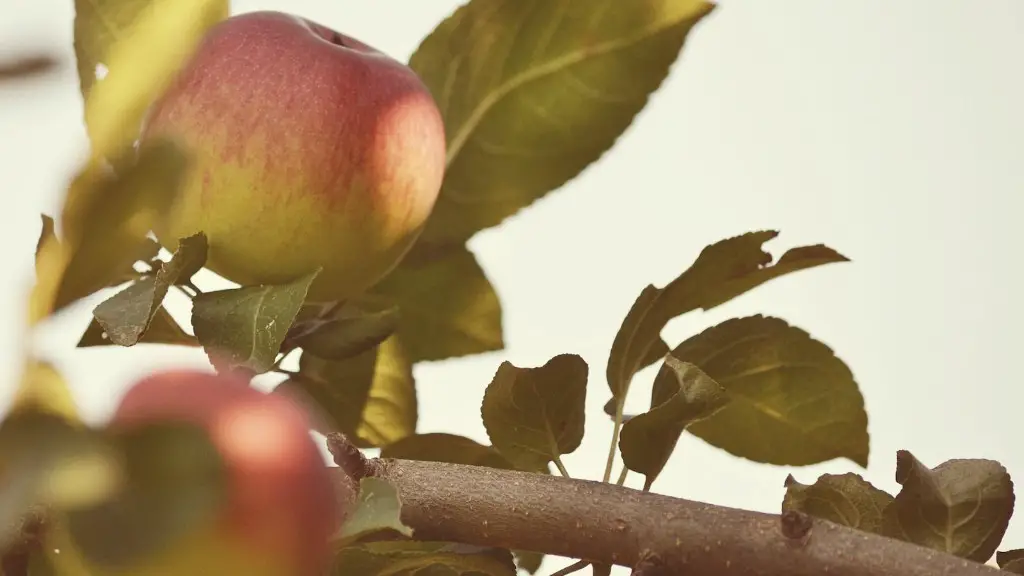What bugs eat cherry tree leaves? Many of us like to grow cherry trees in our gardens and enjoy the sweet and juicy fruits that they bear. But unfortunately, there are some bugs that also love cherry tree leaves and can devour them quickly. Knowing what these pests are and what damage they cause can help us take preventative measures to protect our beloved cherry trees.
The first and arguably one of the most destructive bugs for cherry trees is the tent caterpillar. Tent caterpillars are small, up to one inch long, with a mottled gray, black and white appearance that is easy to recognize. While they feed mainly on cherry tree leaves, these pests will also attack other varieties of trees, such as apple, peach and cherry tree leaves. Tent caterpillars will create a web of ‘tents’ which they use as a feeding ground, and they lay their eggs inside these tents. Unless controlled, these caterpillars will quickly strip the leaves off a cherry tree.
Scale insects are also destructive pests that feed on cherry tree leaves. These insects are much smaller than tent caterpillars, and may be difficult to recognize. Scale insects generally feed on the underside of the leaves and cause yellowish spots to appear on the top surface of the leaf. If left unchecked, scale insects can quickly defoliate a cherry tree.
The third pest that can cause damage to cherry tree leaves is the Green Fruitworm. Green Fruitworms are about half an inch long, with a striped green body and white, fuzzy wings. Despite their name, Green Fruitworms will actually feed on the leaves of cherry trees, and are especially active during the late summer months. Green Fruitworms have the ability to quickly defoliate a cherry tree, leaving it vulnerable to other pests, diseases, and adverse weather conditions.
The most effective strategy to prevent any of these pests from causing significant damage to cherry tree leaves is to inspect the tree regularly and look for early signs of infestation. Tent caterpillars will leave behind visible webbing and droppings, scale insects can be identified by their presence on the underside of the leaves and their yellow spots on the top of the leaves, and green fruitworms can easily be spotted due to their characteristic green and white coloration. Once spotted, the appropriate measures should be taken to prevent further damage.
In addition to routinely inspecting and monitoring cherry trees, there are several other measures that can be taken to reduce the risk of pests attacking a cherry tree. These include using sticky traps and sprays, pruning infected branches, and using beneficial insects and biological controls to attack the pests and keep them away from the cherry tree. By being proactive and taking preventive measures, we can ensure that our cherry trees remain healthy and our fruits sweet and juicy!
How to Detect Pests in Cherry Trees
To detect pests in cherry trees, there are several actions that can be taken to ensure early detection and prevention of any damage or infestation. Start by conducting regular inspections of the tree. Look for tell-tale webbing or droppings of tent caterpillars, and for scale insects, keep an eye for yellow spots or insects on the underside of leaves. If you spot any of these signs, work quickly to them and remove them before they can cause significant damage.
In addition to manual inspections, you can also use sticky traps to capture any pests that may be present in the tree. The traps act as an early warning system, alerting you to any pests present. Sticky traps should be placed at the base of the cherry tree, as well as on any nearby trees or vegetation that may be harboring the pests. Regularly check the traps and promptly remove any pests that are captured.
Other methods of detecting pests in cherry trees include the use of pheromone traps and lures. Pheromone traps and lures are designed to attract pests, and as they enter the trap, they are captured, making it easier to identify the pest. Once identified, the appropriate measures can be taken to prevent further damage.
Finally, the most effective way to detect pests in cherry trees is to use beneficial insects, such as ladybugs and lacewings, to attack and deter the pests from feeding on the tree. These beneficial insects are natural predators of some of the most common pests that attack cherry trees, and will consume them before they can cause significant damage. By planting flowering plants that attract these beneficial insects, you can reduce the risk of a pest infestation and keep your cherry tree healthy and strong throughout the year.
Pest Extermination and Prevention
Once you have noticed the presence of pests in your cherry tree, the next step is to take appropriate measures to exterminate them and prevent them from causing further damage. If you spot any webbing or droppings of tent caterpillars, these can be removed manually with a stick or knife, while scale insects can be scraped off the leaves with a damp cloth. For more serious infestations, chemical sprays and insecticides can be used to effectively remove the pests from the tree.
Once the pests have been exterminated, the next step to preventing future infestations is to use preventative measures. Start by pruning the tree regularly and removing any dead or damaged branches where pests may be able to hide. You can also use sticky traps to capture any pests that may be present on the tree or in the area. Sticky traps should be placed at the base of the cherry tree and its surroundings, and regularly checked and emptied to prevent any pests from building up.
Finally, to keep pests away from cherry trees, use beneficial insects such as ladybugs and lacewings to attack any pests before they can cause serious damage. Plant flowering plants around your cherry tree to attract these beneficial insects, or introduce them to the tree directly. This will ensure that the presence of beneficial insects can help keep pests away and the cherry tree healthy and strong throughout the year.
Treating Cherry Tree Leaf Problems
Once pests have caused damage to cherry tree leaves, the next step is to treat the tree to limit the extent of the damage. Start by pruning away any dead or severely damaged branches to minimize the impact of the infestation. If there are some leaves left on the tree that show signs of damage but are still alive, they can be treated with a foliar spray of neem oil or a beneficial bacteria or fungus. Both neem oil and beneficial bacteria/fungi will help to restore the health of the leaves and protect the tree from further damage.
In addition to treating the tree with neem oil or beneficial bacteria/fungi, you can also use applications of fertilizers and nutrients to help the tree recover. Applying a balanced fertilizer to the soil around the tree will help to replenish any nutrients that may have been depleted due to the pests. You can also add compost or manure to the soil to help provide extra nourishment to the tree and aid in its recovery.
Once the pests have been removed and the tree is receiving proper nutrition and care, the cherry tree should begin to grow new leaves and the damage should start to heal. Keep an eye on the tree and, if necessary, reapply neem oil or beneficial bacteria/fungi treatments if there are signs of re-infestation.
Best Practices to Reduce Pest Risk in Cherry Trees
To reduce the risk of any pests attacking your cherry tree, there are several best practices that can be implemented to keep the tree healthy and strong. Start by planting your cherry tree in an area that is exposed to at least six hours of sunlight per day. This will ensure that the tree receives ample sunlight and is less susceptible to pests.
You can also use mulch to help keep the tree healthy. Mulch acts as a shield and helps to protect the roots of the tree and prevent pests from having direct access to the tree. It can also help retain moisture and provide nourishment to the soil.
Finally, pruning the tree frequently can help reduce the risk of pests attacking the tree. Pruning regularly will keep the tree healthy and help to get rid of any dead or damaged branches. Prune the tree in the late winter months when the tree is dormant, and remove any dead or damaged branches immediately to avoid any pests from taking up residence inside the tree.
By following these simple best practices, you can help keep pests from attacking your cherry tree and keep the tree healthy and strong for many years to come.




